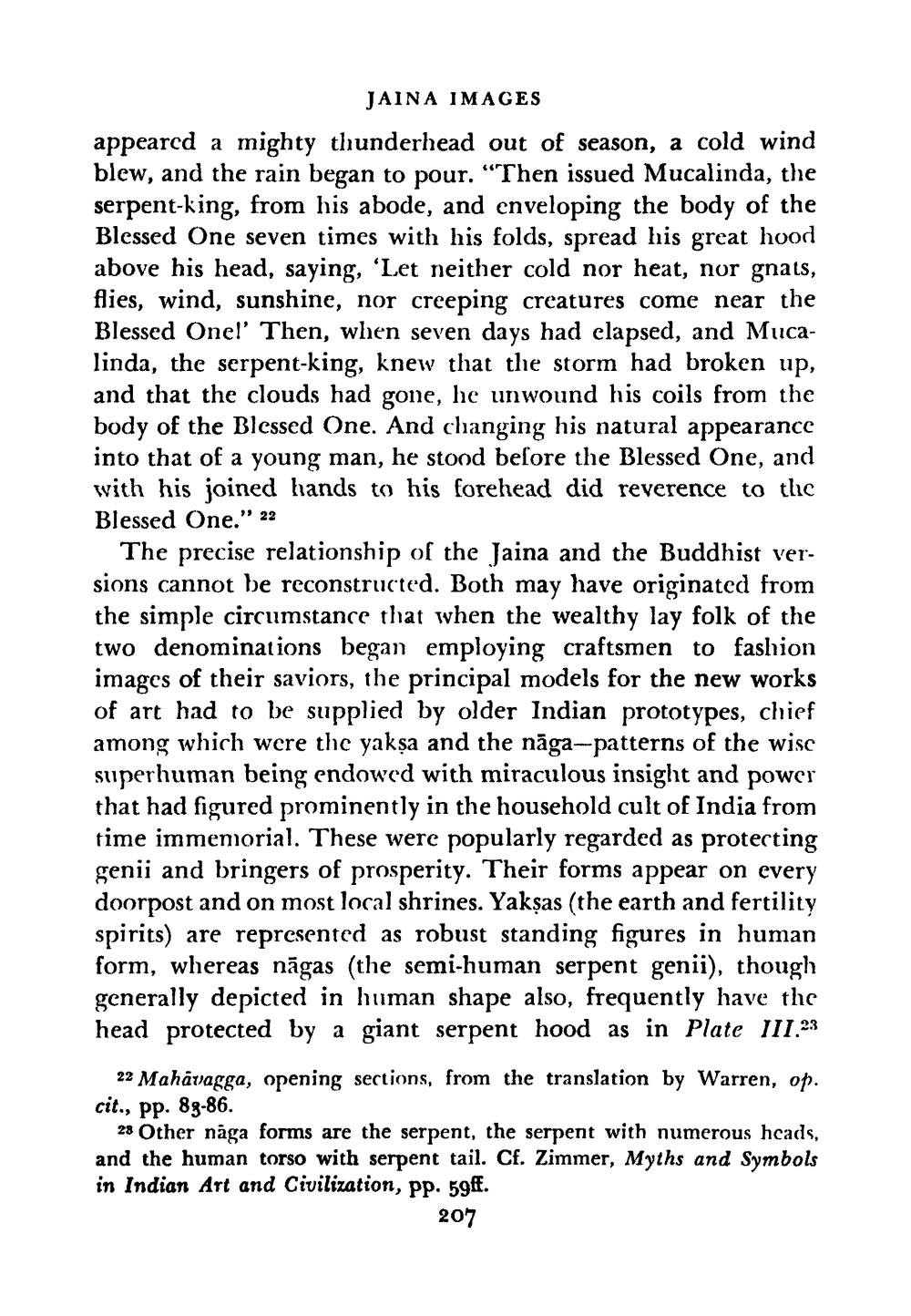________________
JAINA IMAGES
appeared a mighty thunderhead out of season, a cold wind blew, and the rain began to pour. “Then issued Mucalinda, the serpent-king, from his abode, and enveloping the body of the Blessed One seven times with his folds, spread his great hood above his head, saying, 'Let neither cold nor heat, nor gnats, flies, wind, sunshine, nor creeping creatures come near the Blessed One!' Then, when seven days had elapsed, and Mucalinda, the serpent-king, knew that the storm had broken up, and that the clouds had gone, he unwound his coils from the body of the Blessed One. And changing his natural appearance into that of a young man, he stood before the Blessed One, and with his joined hands to his forehead did reverence to the Blessed One." 22
The precise relationship of the Jaina and the Buddhist versions cannot be reconstructed. Both may have originated from the simple circumstance that when the wealthy lay folk of the two denominations began employing craftsmen to fashion images of their saviors, the principal models for the new works of art had to be supplied by older Indian prototypes, chief among which were the yakșa and the nāga--patterns of the wisc superhuman being endowed with miraculous insight and power that had figured prominently in the household cult of India from time immemorial. These were popularly regarded as protecting genii and bringers of prosperity. Their forms appear on every doorpost and on most local shrines. Yakşas (the earth and fertility spirits) are represented as robust standing figures in human form, whereas nāgas (the semi-human serpent genii), though generally depicted in human shape also, frequently have the head protected by a giant serpent hood as in Plate III.23
22 Mahävagga, opening sections, from the translation by Warren, op. cit., pp. 83-86.
28 Other nāga forms are the serpent, the serpent with numerous heads, and the human torso with serpent tail. Cf. Zimmer, Myths and Symbols in Indian Art and Civilization, pp. 59ff.
207




